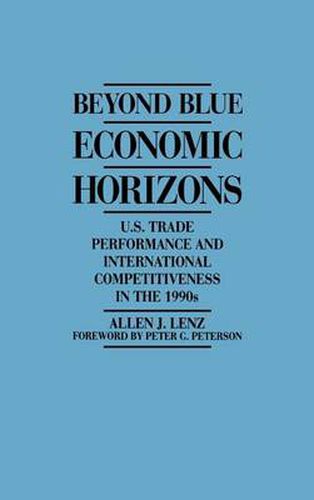Readings Newsletter
Become a Readings Member to make your shopping experience even easier.
Sign in or sign up for free!
You’re not far away from qualifying for FREE standard shipping within Australia
You’ve qualified for FREE standard shipping within Australia
The cart is loading…






Designed as a primer for policymakers and students, this volume focuses on two critical problems the United States faces as we move into the 1990s: the unprecedented size of US trade deficits and the nation’s declining international competitiveness. The author uses contemporary data to identify and explain the linkages among trade deficits, budget deficits, international compeitiveness, the future of manufacturing in the United States, the US debtor position, foreign direct investment and other related economic and political problems. Particular attention is given to the critical role of the manufacturing sector in determining the nation’s international competitiveness and to the effects on the manufacturing sector of tax and fiscal policies that alter international capital flows. The author’s central unifying theme is that US trade deficits and the nation’s international competitiveness are related but different problems requiring separate policy consideration and sometimes different policy prescriptions. In fact, the author demonstrates, some policies that could improve US trade balances would actually reduce international competitiveness. Divided into four parts, the book begins by defining international competitiveness, separating it from the trade deficit problems, and identifying its major determinants. Part II deals with the decline of US trade performance in the 1980s and traces the growth of the deficit, its causes, the effect of remedial policy actions, and the implications for US manufacturing. The resulting escalation in US international debt is also discussed and analyzed. In the third section, the author examines the difficult adjustments that both the United States and its major trading partners must make to narrow unsustainable US deficits and the complementary surpluses of some trading partners. The final section explores the key policy alternatives for dealing with the trade and ompetitiveness issues in the 1990s and provides a broad agenda of actions to deal with both problems. A separate chapter describes flaws in the organization of the US government which hinder the conduct of US policy and US international economic leadership.
$9.00 standard shipping within Australia
FREE standard shipping within Australia for orders over $100.00
Express & International shipping calculated at checkout
Designed as a primer for policymakers and students, this volume focuses on two critical problems the United States faces as we move into the 1990s: the unprecedented size of US trade deficits and the nation’s declining international competitiveness. The author uses contemporary data to identify and explain the linkages among trade deficits, budget deficits, international compeitiveness, the future of manufacturing in the United States, the US debtor position, foreign direct investment and other related economic and political problems. Particular attention is given to the critical role of the manufacturing sector in determining the nation’s international competitiveness and to the effects on the manufacturing sector of tax and fiscal policies that alter international capital flows. The author’s central unifying theme is that US trade deficits and the nation’s international competitiveness are related but different problems requiring separate policy consideration and sometimes different policy prescriptions. In fact, the author demonstrates, some policies that could improve US trade balances would actually reduce international competitiveness. Divided into four parts, the book begins by defining international competitiveness, separating it from the trade deficit problems, and identifying its major determinants. Part II deals with the decline of US trade performance in the 1980s and traces the growth of the deficit, its causes, the effect of remedial policy actions, and the implications for US manufacturing. The resulting escalation in US international debt is also discussed and analyzed. In the third section, the author examines the difficult adjustments that both the United States and its major trading partners must make to narrow unsustainable US deficits and the complementary surpluses of some trading partners. The final section explores the key policy alternatives for dealing with the trade and ompetitiveness issues in the 1990s and provides a broad agenda of actions to deal with both problems. A separate chapter describes flaws in the organization of the US government which hinder the conduct of US policy and US international economic leadership.